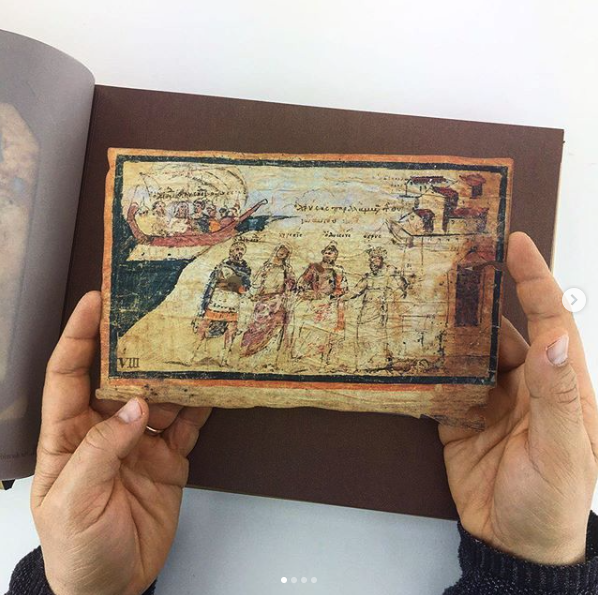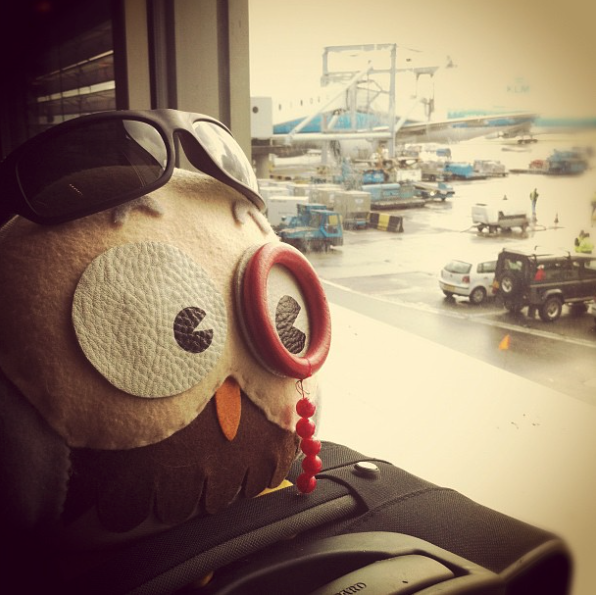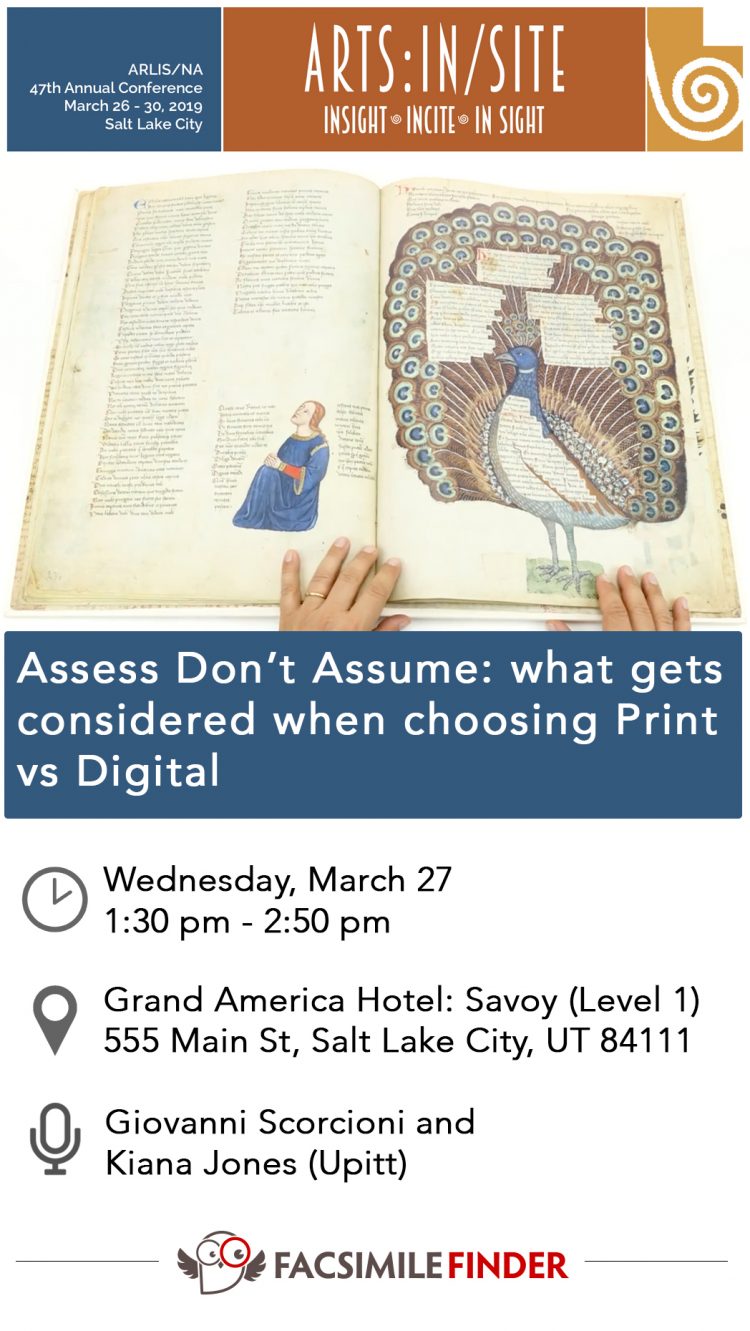In the past decade, Facsimile Finder allowed me to fulfill a dream I didn’t know I had: making culture more accessible. This is how it all unfolded.



When Giulia and I first considered becoming facsimile providers back in 2009, we couldn’t imagine that in a few years we would become trusted suppliers of major North American universities and libraries. Instead, it turned out even better than we ever hoped.
The beginning of an unexpected dream

It was the summer of 2011 on the Mediterranean shoreline of Rimini. Back then, my notebook was filled with question marks and names of the congresses and universities I had been to: Leeds, Kalamazoo, Princeton, Harvard.
Under the heat of the Italian sun, I thought about my recent talk with a Princeton librarian: she had told me how much her university needed a trustworthy supplier to help them through the maze of available facsimile editions.
An idea popped into my mind: Facsimile Finder!

Many seasons have gone by, and hundreds of facsimiles have passed before our eyes, but my goal remains the same: always listen to the needs of scholars and librarians to make illuminated art as accessible as possible.
Now, why did I say that our adventure turned out better than we had expected? Well, first of all, because libraries and universities trust us not only with providing rare, out-of-stock facsimiles at competitive prices, but also, if not especially, because of the 10-year knowledge we gained in the field of facsimiles.
In the age of Amazon, we are proud to say we foster personal relationships above anything else.
Through the years, I have had the precious chance to witness all the stages of the life of a facsimile edition: giving shape to the editorial concept, leafing through original manuscripts in restricted archives, and developing a personal relationship with publishers, printers, and bookbinders.

I have also learned about marketing the volumes, searching the second-hand and antique market for rare editions, and even using facsimiles to teach history and art to university students!
But let’s go back to the beginning. On January 13th, 2009, we sold our first manuscript, La Flora Book of Hours. At that time, we were distributing only three publishers, two Italian and one Spanish.
Now we have more than 200 publishing houses on our website! Indeed, when the FacsimileFinder website was launched in 2011, librarians were finally given a systematic tool to search for facsimile editions.
Digging deeper into illuminated art

At the start of 2012, our first dream had been achieved, but my notebook was filled with new questions: to what extent are facsimiles true to the original? Which skills are needed to reproduce the opulence and mastery of past treasures?
The only way to find out was to talk to expert photographers, lithographers, and other artisans who re-create facsimiles, and what I discovered bedazzled me even more: working on a manuscript today is just as challenging a task as it was centuries ago. Because facsimile art has made an amazing leap forward thanks to digital imaging technology, artists can now manipulate every pixel of the century-old folio, and their care and attention always remind me of meticulous monastic copying work.

Unlike authentic copies, always kept under lock and key to avoid damage, facsimile editions allow the general public to examine and appreciate the culture of the past. They are nowadays used even in universities, where students can admire their beauty in a way that was unthinkable before.
I will always remember the look on the faces of Kenyon College students when individual folios of the Ambrosian Iliad were spread before their eyes, and their awe when I explained how intricate the facsimile making process is. Thank you Kenyon College for hosting me!
The technological metamorphosis
In the fall of 2016, I became particularly interested in the way technology inevitably alters the features of manuscripts, and more questions were roaming in my mind: how do pressmen apply golden leaf to the facsimile of an illuminated manuscript? What happens when colors are transferred from the century-old page to the digital scan, and back to the page?

The answers, not at all simple, unfolded into an essay published by the English Association in 2017 (Distortion in Textual Object Facsimile Production: A Liability or an Asset?). Who would have ever thought that distortion can positively influence the making of a facsimile version? These and more surprises were included in my findings.
As you probably have sensed so far, the adventure started ten years ago is far from being over yet, and I am eager to find out the results of our ongoing projects.
In addition to this, the over 1200 descriptions of facsimiles listed on our website will be completely edited by a team of experts to make sure each text is academically accurate and easy to search from any device. What better way to preserve the past, while serving the future?
The one I most cherish is Facsimile Finder for Libraries, a web-based software directly connected to the catalog of each library, with accurate bibliographic descriptions and high-quality photos and videos. This tool, developed in collaboration with Kiana Jones, Fine Arts Librarian at the University of Pittsburgh, aims to make it easy for the scholarly community to access information on facsimiles.*
After 10 years of leafing through precious facsimiles, with 15 notebooks piled up on my desk, I can safely state that the knowledge of past centuries will never stop inspiring me, and will always make me want to find new ways to share culture with the world.
Thank you all for making this possible!
Giovanni Scorcioni, founder of Facsimile Finder



*To find out more, go to minute 48:00 of the presentation Kiana and I held at the ARLIS/NA 47th Annual Conference.


